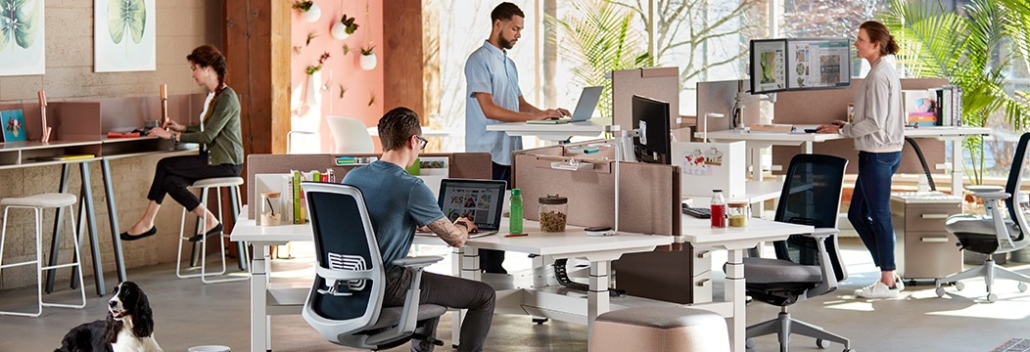Haworth – The Rebirth of the Headquarters
We are going through an unparalleled moment in history, where every single organization and business in the world has been forced to rethink what it means to work—the way work is performed, where it is done, by whom, and what it will look like in the future.
Just a month after the onset of the COVID-19 pandemic in the US, Facebook’s CEO, Mark Zuckerberg, streamed live what would have otherwise been a company town hall session—but an employee leaked the audio. The meeting focused entirely on addressing the results of an internal survey where employees addressed their working conditions. Founded in 2004, the ability for Facebook employees to work from home grew out of possibility and necessity. According to the survey, nearly 95 percent of the employees at Facebook at the time were working from home, and at least half had no desire to return to the office. As a result, Zuckerberg has catapulted Facebook as “the most forward-leaning company on remote work at their scale.”
The shift to remote work is being mirrored—to a degree—by major corporations including JPMorgan, Capital One, Amazon, Microsoft, and Zillow. In 2020, these companies announced they would be expanding their work-from-home policies and restructuring part of their workforce to support remote work.
My experience with Apple Park in Cupertino, California has led me to carefully examine the context of Silicon Valley—a place I have been studying as an academic since 2018 and the address of some of the most disruptive industries in the world. Over the last year, I have identified a series of trends that bring into focus how the office will transform in the future—and the newfound vigor of the headquarters.
Office Space: Doing What the Home Does Not
As we have already learned from China, employees will return to the traditional office. However, what will be most challenging as the pandemic subsides is employee morale. Adjusting from individual focus work time and the comfort of home to being in-person at the office will take time and support.
Rather than a regression to the cubicle or the challenging vast spaces of an open-plan office, new typologies will have to emerge around productive group dynamics and their unique ebb and flow of activities. Providing what the home cannot, the office will integrate the physical and virtual workplace. Design and occupancy will become a continuous process—one that greatly depends on the unseen aspects of a workplace, such as acoustics.
Hubs: Satellite Centers, Not Offices
Satellite office hubs are emerging at an increasing rate. The leaked audio from Google’s Sundar Pichai and Facebook’s town hall reiterates the power of satellite office hubs as a critical part of a remote work-from-anywhere strategy.
A word meant to define a “center of interest, activity, or importance,” is being used today to refer to the office space outside major cities. Hubs are nothing new—in fact, Avery Hartmans reminds us that the banking industry set up satellite offices outside of lower Manhattan after the 9/11 era—but the increasing relevance and application of them is.
What makes these satellite hubs, or centers, different from the traditional office space is the character and environment they provide—somewhere between a coworking space, an active learning classroom, and an executive suite.
Satellite hubs will equally support staff and clients and the onboarding and training of new-hires, as well as provide a place for social gatherings. They will be outfitted with customizable and reconfigurable seating, desks, and technology to support individual and group work.
Headquarters: Exceptional Rather Than Ordinary
As the traditional corporation disperses, a newfound function will begin to emerge. It will no longer be routine to go to the office every day. Instead, the headquarters will be a destination for connection and collaboration. Activities that are best done there, will be done there—and other activities will be performed elsewhere. Instead of focusing on individual functional areas, the designing of the headquarters must take a transversal perspective. But how is this different from the headquarters of today?
Coming to headquarters in the future will mean a suspension from the work routine. It will be a space of gathering rather than open-plan desking. Its functions will be geared towards an exceptional experience for staff and the public.
The office won’t perish in the years to come. Instead, it will continue to take the form of the kind of work that is considered of value. In this knowledge-based economy, valuable work is increasingly linked to communication, and the exceptionality of the headquarters provides a crucial insight to its future success.





